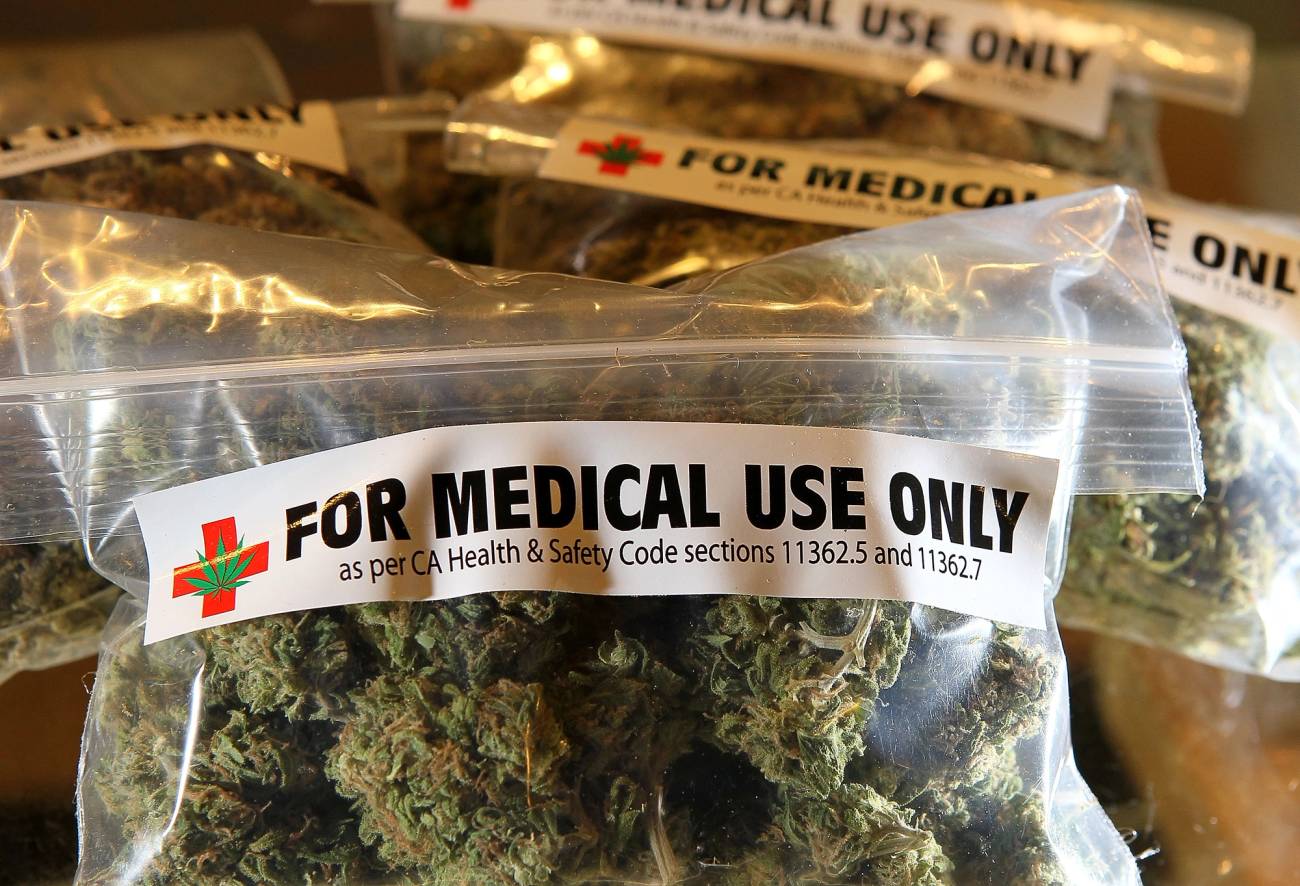How Weed Became the New OxyContin
Big Pharma and Big Tobacco are helping market high-potency, psychosis-inducing THC products as your mother’s ‘medical marijuana’
AUGUST 30, 2022

JUSTIN SULLIVAN/GETTY IMAGES
For 30 years, Dr. Libby Stuyt, a recently retired addiction psychiatrist in Pueblo, Colorado, treated patients with severe drug dependency. Typically, that meant alcohol, heroin, and methamphetamines. But about five years ago, she began to see something new.
“I started seeing people with the worst psychosis symptoms that I have ever seen,” she told me. “And the worst delusions I have ever seen.”
These cases were even more acute than what she’d seen from psychotic patients on meth. Some of the delusions were accompanied by “severe violence.” But these patients were coming up positive only for cannabis.
Stuyt wasn’t alone: Health care professionals throughout Colorado and all over the country were seeing similar episodes.
Ben Cort, who runs an addiction recovery center in Steamboat Springs, Colorado, watched a young man jump up on the table in the emergency department and strip naked, claiming he was the God of thunder and threatening to kill everyone in the room, including two police officers. A collegiate athlete Cort worked with also had a psychotic episode and was shot five times by the police with a beanbag gun before he was subdued. In Los Angeles County, Blue Stohr, a psychiatric social worker, had a patient who climbed a 700-foot crane and considered jumping off of it, not because he was suicidal but because he thought he was in a computer simulation, like The Matrix.
Those patients, too, were high only on cannabis.
In 2012, Colorado legalized marijuana. In the decade since, 18 other states have followed suit. As billions of dollars have flowed into the new above-ground industry of smokable, edible, and drinkable cannabis-based products, the drug has been transformed into something unrecognizable to anyone who grew up around marijuana pre-legalization. Addiction medicine doctors and relatives of addicts say it has become a hardcore drug, like cocaine or methamphetamines. Chronic use leads to the same outcomes commonly associated with those harder substances: overdose, psychosis, suicidality. And yet it’s been marketed as a kind of elixir and sold like candy for grown-ups.
“I got into addiction medicine because of the opioid crisis,” said Dr. Roneet Lev, an addiction medicine doctor in San Diego who hosts a podcast about drug abuse. Years ago, she advocated against the overprescription of opioid painkillers like OxyContin. Now, she believes she’s seeing the same thing all over again: the specious claims of medical benefits, the denial of adverse effects. “From Big Tobacco to Big Pharma to Big Marijuana—it’s the same people, and the same pattern.”
Prior to legalization, marijuana plants were bred to produce higher and higher concentrations of THC, a naturally occuring chemical compound in the plant that induces euphoria and alters users’ perceptions of reality. In the 1960s, the stuff the hippies were smoking was less than 2% THC. By the ’90s, it was closer to 5%. By 2015, it was over 20%. “It’s a freak plant that resembles nothing of what has existed in nature,” said Laura Stack, a public speaker who has advocated against the industry since her son, Johnny, killed himself three years ago at 19 years old after years of cannabis abuse drove him into psychosis.
In the era of legalized weed, the drug you think of as “cannabis” can hardly be called marijuana at all. The kinds of cannabis products that are sold online and at dispensaries contain no actual plant matter. They’re made by putting pulverized marijuana into a tube and running butane, propane, ethanol, or carbon dioxide through it, which separates the THC from the rest of the plant. The end product is a wax that can be 70% to 80% THC. That wax can then be put in a vacuum oven and further concentrated into oils that are as much as 95% or even 99% THC. Known as “dabs,” this is what people put in their vape pens, and in states like California and Colorado it’s totally legal and easily available to children. “There are no caps on potency,” said Stack.
If you’re over 30 years old and you used to smoke weed when you were a teenager, the strongest you were smoking was probably 20% THC. Today, teenagers are “dabbing” a product that’s three, four, or five times stronger, and are often doing so multiple times a day. At that level of potency, the impact of the drug on a user’s brain belongs to an entirely different category of risk than smoking a joint or taking a bong rip of even an intensively bred marijuana flower. It’s highly addictive, and over time, there’s a significant chance it can drive you insane.
If you’ve ever smoked a bowl and become irrationally anxious that everyone is staring at you and knows you’re high, what you experienced was a mild symptom of cannabis-induced psychosis. According to one study, about 40% of people react this way. If you experience that paranoia and keep smoking on a regular basis nonetheless—especially with today’s high-potency THC products, and especially if you’re young—there’s a good chance you’ll eventually suffer a full psychotic break; 35% of young people who experience psychotic symptoms, according to another study, eventually have such an episode. If you keep using after that, you run a decent risk of ending up permanently schizophrenic or bipolar. Cannabis has by far the highest conversion rate to schizophrenia of any substance—higher than meth, higher than opioids, higher than LSD. Two Danish studies, as well as a massive study from Finland, put your chances at close to 50%.

Recent Comments